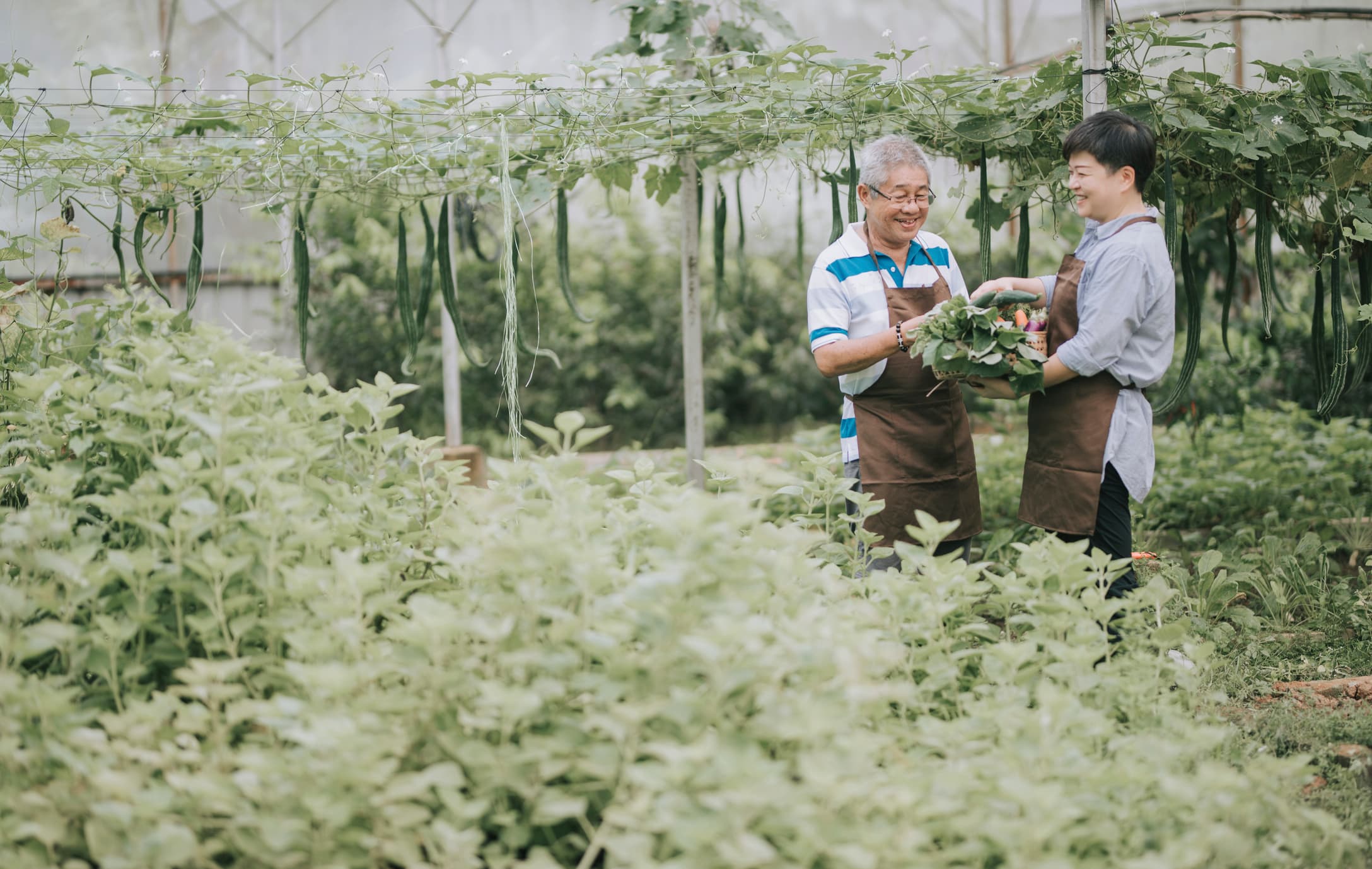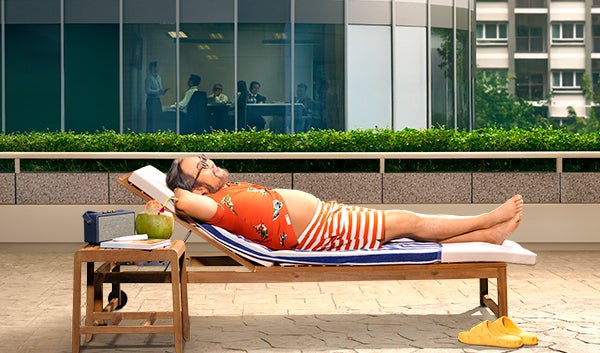Guide to Matched Retirement Savings Scheme (MRSS): How to top up and more
Key Takeaways:
- MRSS helps eligible senior Singaporeans boost their CPF Retirement Account with a Government matching grant of up to S$2,000 per year, encouraging long-term retirement savings without the need for applications.
- CPF top-ups under MRSS must be made in cash and can be done at any time of the year, by the individual or their loved ones, as long as eligibility conditions are met.
- While CPF LIFE provides lifelong monthly payouts, it mainly covers basic living expenses. Understanding the differences between the Escalating, Standard, and Basic plans can help you choose one that suits your retirement needs.
- To enjoy a more comfortable retirement, consider supplementing your CPF with flexible savings and investment plans to build a stronger financial foundation for your future.
A Closer Look at the Matched Retirement Savings Scheme
CPF top-ups have long been a strategy for boosting your retirement savings and those of your loved ones. Now, with CPF’s Matched Retirement Savings Scheme (MRSS), you can top up your CPF Retirement Account (RA) and receive additional support from the government while doing so.
With the Matched Retirement Savings Scheme, eligible individuals can receive up to $2,000 per year, with a lifetime cap of $20,000, through a dollar-for-dollar matching grant from the Singapore government. Unlike the Retirement Sum Topping-Up Scheme (RSTU), which is available to everyone, the MRSS was launched to assist elderly Singaporeans who have not met the current Basic Retirement Sum (BRS).
In this article, we will cover when and how you can use the scheme to support you or your loved ones’ retirement planning goals, as well as quick guides on how you can make a top-up for yourself, your parents, or other members of your family.
How Does the Matched Retirement Savings Scheme Work?
The Matched Retirement Savings Scheme was introduced to help senior Singaporeans meet the BRS, thereby increasing their monthly retirement income to support basic living expenses.
Launched in 2021, the MRSS supports senior Singapore Citizens with lower retirement savings by matching the cash top-ups made to their Retirement Accounts (RA).
Previously, eligible seniors aged 55 to 70 received a dollar-for-dollar matching grant from the Government for cash top-ups to their RA, capped at S$600 per year. As of 1 January 2025, the annual matching limit has been raised to S$2,000, with a lifetime cap of S$20,000. The age limit of 70 has also been removed, allowing more seniors to qualify for the scheme.
If you are eligible for the scheme, you can make a cash top-up at any time during the year. The matching grant will then be automatically credited to your RA at the start of the following year.
For example, if you make top-ups in 2025, you will receive a matching grant of up to S$2,000 at the beginning of 2026. This applies whether you make a single lump sum top-up or smaller contributions spread across several months.
Eligible individuals are automatically notified each year. No application is required.
Who is Eligible for the Matched Retirement Savings Scheme?
The Matched Retirement Savings Scheme is designed for senior Singaporeans who have yet to meet the current BRS requirements. To ensure the scheme supports those who need it most, only individuals who have not reached the BRS are eligible.
Here is the complete set of eligibility criteria for the MRSS:
- Must be a Singapore Citizen
- Aged 55 and above as of 31 December of the assessment year
- Retirement Account (RA) savings are below the BRS
- Average monthly income of S$4,000 or less. This includes most of the senior workers in Singapore
- Annual value of residence is S$21,000 or less. This covers the majority of HDB flats
- Own not more than one property
Even if you are not eligible, your elderly parents might be. This can be a meaningful way to help them build up their retirement savings. As long as they meet the criteria, they can benefit from the MRSS even if the cash top-ups are made by someone else.
How to Check Your Eligibility for the Matched Retirement Savings Scheme
Eligibility for the Matched Retirement Savings Scheme is automatically reviewed each year. Even if you were not eligible in the past, you may qualify in future if your circumstances change, such as a shift in income or residence status.
Those who are eligible will be notified by CPF at the start of each year. You can also check your eligibility by logging in to your dashboard on the CPF website or by using the MRSS eligibility checker.
Benefits of Making a CPF Top-up With the Matched Retirement Savings Scheme
The Matched Retirement Savings Scheme is a helpful way to grow your retirement savings or support your loved ones in building theirs. Beyond the Government’s matching grant of up to S$2,000 per year, making a top-up to the CPF Retirement Account (RA) also brings other long-term benefits.
1. Earn Attractive CPF Interest Rates
Savings in your CPF RA earn attractive interest rates of up to 6% per year. These rates are often higher than those offered by many banks in a low-interest environment. Unlike market investments, CPF savings offer capital and interest guarantees, making them a more stable component within long-term financial planning.
2. Receive Higher Monthly Payouts During Retirement
The more you have in your CPF RA, the more you’ll receive through CPF LIFE. This lifelong monthly payout supports you through retirement, and top-ups help you move closer to, or even exceed, the BRS, which is designed to cover basic living expenses.
3. Build Toward a More Comfortable Retirement
While the BRS ensures a basic level of retirement income, adding more to your CPF RA gives you the flexibility to enjoy a more comfortable retirement. Regular top-ups, even in smaller amounts, can make a meaningful difference over time.
4. Understand the Updated Tax Relief Rules
Although MRSS top-ups previously qualified for tax relief, this changed from 1 January 2025. Cash top-ups that attract the MRSS matching grant are no longer eligible for tax relief.
However, you can still enjoy tax reliefs of up to S$16,000 a year for other cash top-ups that do not receive the MRSS grant (up to S$8,000 for top-ups to your own CPF accounts, and up to S$8,000 for top-ups to your loved ones’ accounts).
Although the Matched Retirement Savings Scheme grant is capped at S$2,000 per year, you can choose to top up the amount beyond this limit. Doing so allows you to continue enjoying CPF interest, grow your monthly retirement payouts, and receive tax relief on the portion of top-ups not covered by the scheme.
Things to Consider Before Topping Up Your CPF
While topping up your CPF accounts can be a smart way to grow your retirement savings, it is crucial to understand the key considerations before making a decision.
CPF top-ups are irreversible. Once funds are transferred into your Retirement Account (RA) or Special Account (SA), they cannot be withdrawn as a lump sum and will only be paid out as monthly retirement payouts.
If you anticipate needing cash for near-term goals, such as property purchases or other major expenses, it may be beneficial to keep some funds in your CPF Ordinary Account (OA), in liquid savings outside of CPF, or in savings and investment plans that offer more flexibility. Having access to flexible funds can help you balance long-term planning with short-term needs.
How to Make a Cash Top-Up Under the Matched Retirement Savings Scheme
You can make a cash top-up under the Matched Retirement Savings Scheme at any time during the year. You may choose to contribute smaller amounts across the year or make a one-time lump sum, up to the maximum matching grant of S$2,000 per year. Only cash top-ups are eligible for matching under the MRSS.
Top-ups can be made not just for yourself, but also for your parents, family members, or anyone else who qualifies for the scheme.
You can make a top-up through:
- The CPF Mobile App
- myCPF online services (via CPF website)
- GIRO (for recurring top-ups)
These options offer flexibility and convenience, whether you're planning a one-time contribution or setting up regular support for a loved one.
Retirement Sum Topping Up Scheme vs Matched Retirement Savings Scheme: What’s the Difference?
Both the Retirement Sum Topping Up Scheme (RSTU) and Matched Retirement Savings Scheme aim to help Singaporeans grow their retirement savings through CPF top-ups. While they share a similar purpose, there are several significant differences in who qualifies, how the schemes operate, and the benefits they offer.
| Retirement Sum Topping Up Scheme | Matched Retirement Savings Scheme | |
| Eligibility | All Singapore Citizens and PRs. Top-ups are allowed up to the Full Retirement Sum (FRS) if you are under age 55, or up to the Enhanced Retirement Sum (ERS) if you are aged 55 and above. | Only senior Singapore Citizens aged 55 and above who have not met the current Basic Retirement Sum (BRS) and meet other criteria (e.g. income, property ownership). |
| Benefits |
|
|
| Top-ups can be made to | Special Account (SA) if under 55 or Retirement Account (RA) above 55 | Retirement Account (RA) only |
| Top-up methods | Cash or CPF transfers | Cash only |
The main difference lies in who the schemes are for. The MRSS is targeted at senior Singaporeans with lower retirement savings who have not met the BRS, while the RSTU is open to all Singapore Citizens and PRs looking to strengthen their retirement savings.
Even if you are not eligible for the MRSS, you can still make use of the RSTU to top up an eligible member’s account, or your own, and enjoy tax reliefs. If you qualify for both, you can combine the benefits of the RSTU and MRSS to accelerate your savings and secure a stronger retirement.
Planning Beyond the Matched Retirement Savings Scheme
While the Matched Retirement Savings Scheme helps grow your CPF Retirement Account, for many, it may only cover the basics. To plan for a comfortable retirement effectively, it is essential to understand how CPF LIFE works and how you can supplement it.
CPF LIFE offers three payout options, all of which provide monthly income for life:
- Escalating Plan: Payouts start lower but grow by 2% each year, helping you keep pace with inflation over time.
- Standard Plan: Offers fixed monthly payouts, suited for those who prefer stable and predictable budgeting.
- Basic Plan: Payouts start lower and decrease gradually when your CPF balance drops below $60,000. This is more suitable for those with minimal future spending needs.
Your monthly payout will depend on the amount in your Retirement Account when you begin receiving payouts. While CPF LIFE offers financial stability, it is primarily meant to cover basic living expenses.
If you’re aiming for more flexibility, such as covering healthcare needs, enjoying travel, or maintaining your current lifestyle, you may want to supplement your CPF with other retirement savings tools.
This is where Income’s insurance savings and investment plans, like Gro Retire Flex Pro II and WealthLink, can step in to help. These solutions complement CPF LIFE and can be funded using cash or your Supplementary Retirement Scheme savings. They offer customisable options to help you build a stronger, more flexible income stream for your retirement years.
Should You Top Up Your CPF with the Matched Retirement Savings Scheme?
If you are eligible for the Matched Retirement Savings Scheme and able to make a top-up, it is a simple yet effective way to grow your CPF Retirement Account. With the Government’s dollar-for-dollar matching grant, each cash top-up provides added value, offering a way for eligible individuals to boost their retirement savings.
On top of that, you’ll continue to enjoy the higher interest rates offered by CPF, helping your savings grow steadily over time.
To build a stronger foundation for your future, consider combining the MRSS with other available options that offer tax benefits or flexible retirement income. You can also speak with our friendly Income advisor to explore how our savings and investment plans can complement your CPF and help you achieve your long-term goals.
This article is meant purely for informational purposes and does not constitute an offer, recommendation, solicitation or advise to buy or sell any product(s). It should not be relied upon as financial advice. The precise terms, conditions and exclusions of any Income Insurance products mentioned are specified in their respective policy contracts. Please seek independent financial advice before making any decision.
These policies are protected under the Policy Owners’ Protection Scheme which is administered by the Singapore Deposit Insurance Corporation (SDIC). Coverage for your policy is automatic and no further action is required from you. For more information on the types of benefits that are covered under the scheme as well as the limits of coverage, where applicable, please contact Income Insurance or visit the GIA/LIA or SDIC websites (www.gia.org.sg or www.lia.org.sg or www.sdic.org.sg).
This advertisement has not been reviewed by the Monetary Authority of Singapore.








